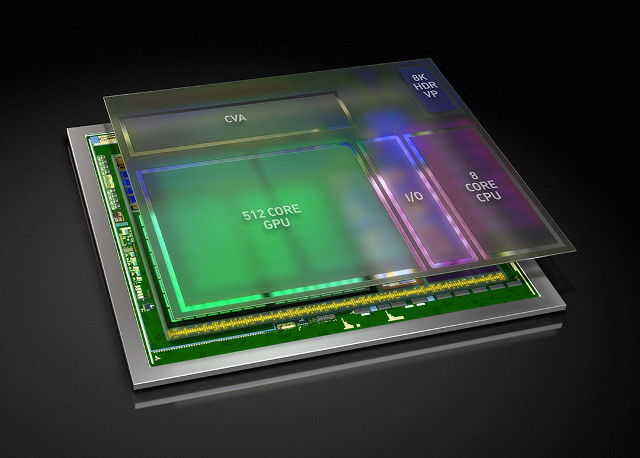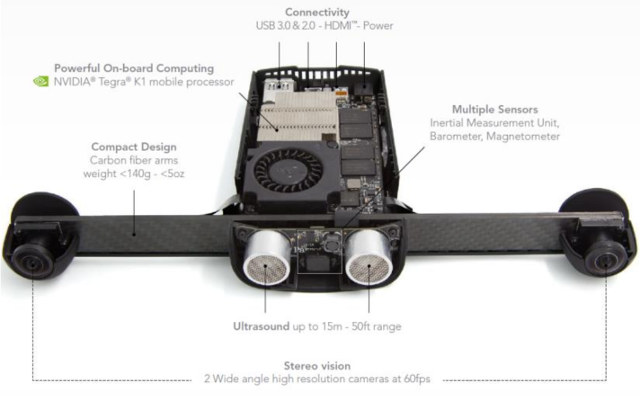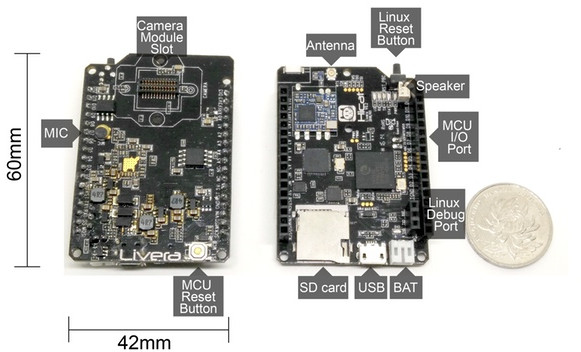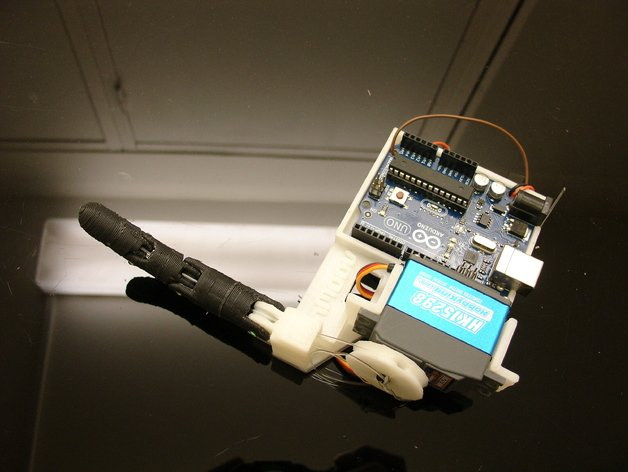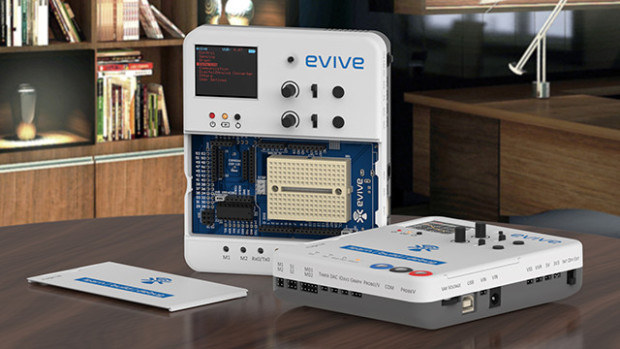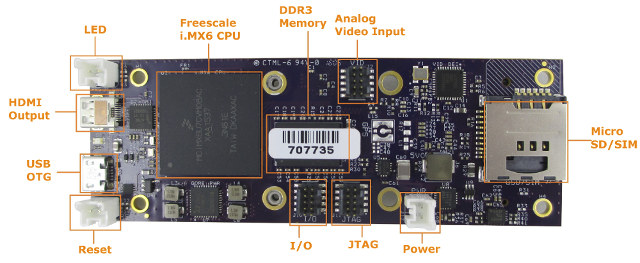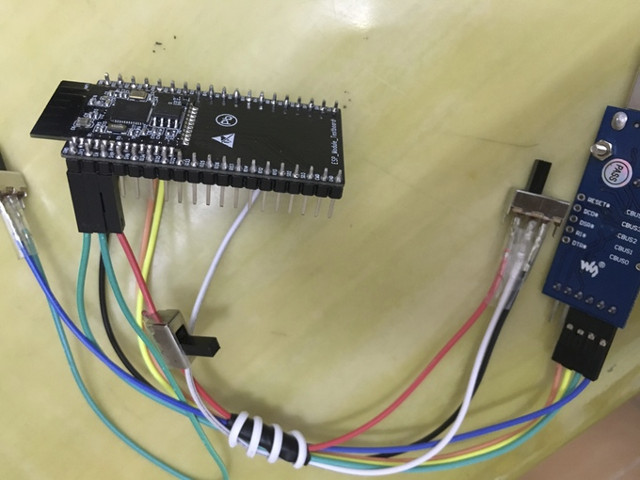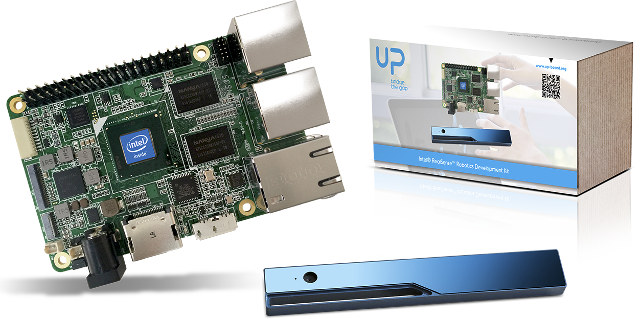Nvidia has introduced the successor to their Parker SoC mostly targeting self-driving cars and artificial intelligence applications, with Xavier SoC featuring 8 custom ARMv8 cores, a 512-core Volta GPU, a VPU (Video Processing Unit) supporting 8K video decode and encode and HDR (High Dynamic Range), as well as a computer vision accelerator (CVA). The processor will deliver 20 TOPS (trillion operations per second) of performance, while consuming only 20 watts of power, and since it’s designed specifically for autonomous cars, it will comply with automotive safety standards such as ISO 26262 functional safety specification. Anandtech published a comparison table with Tegra X1 (Erista), Parker, and Xavier using currently available information. Xavier Parker Erista (Tegra X1) CPU 8x NVIDIA Custom ARM 2x NVIDIA Denver + 4x ARM Cortex-A57 4x ARM Cortex-A57 + 4x ARM Cortex-A53 GPU Volta, 512 CUDA Cores Pascal, 256 CUDA Cores Maxwell, 256 CUDA Cores Memory ? LPDDR4, […]
Parrot S.L.A.M Dunk is a Ubuntu & ROS Computer with 3D Depth Cameras for Drones & Robots
Parrot and Canonical have partnered to develop the Parrot S.L.A.M.dunk development kit for the design of applications for autonomous navigation, obstacle avoidance, indoor navigation and 3D mapping for drones and robots, and running both Ubuntu 14.04 and ROS operating systems. The name of the kit is derived from its “Simultaneous Localization and Mapping algorithm” (S.L.A.M) allowing for location without GPS signal. Parrot S.L.A.M Dunk preliminary specifications: SoC – NVIDIA Tegra K1 processor Camera – Fish-eye stereo camera with a 1500×1500 resolution at 60fps Sensors – Inertial-measurement unit (IMU), ultrasound sensor up to 15 meters range, magnetometer, barometer Video Output – micro HDMI USB – 1x micro USB 2.0 port, 1x USB 3.0/2.0 port Weight – 140 grams Parrot S.L.A.M dunk can be fitted various drones and robotic platforms such as quadcopters and fixed-wings, rolling robots and articulated arms using mounting kits. The computer module is then connected to the host […]
HICAT.Livera Machine Vision Board and Robot Kit Feature HiSilicon Hi3518 SoC (Crowdfunding)
HiSilicon Hi3518 ARM9 processor is mostly being used in IP cameras, but Hicat startup decided to combined the camera processor with an Atmel MCU and a MT7601 WiFi module to create a wireless camera board to be used with OpenCV, and even provide a complete affordable robot kit with the board. Hicat.livera board specifications: Vision Core – Hisilicon Hi3518 ARM9 processor @ 440 MHz Storage – 16MB flash + micro SD card MCU – Atmel ATmega32U4 AVR micro-controller Connectivity – 802.11 b/g/n WiFi via Mediatek MT7601 module + u.FL antenna connector Camera interface with provided 140 deg. camera using Omnivision OV9712 720p (1280×720) sensor USB – 1x micro USB port for power and programming Audio – Built-in microphone, speaker header Sensors – MPU6050 accelerometer and gyro Expansion – 2x GPIO headers with GPIOs, I2C, SPI, serial, PWM, digital, analog and power signals. Misc – MCU reset and Linux reset buttons, […]
Learn the Basics of Humanoid Robots with InMoov Finger Starter Kit
In a not so distant future, most humans will live off their government provided basic income, relaxing and drinking their robot brewed, drone delivered beer or soda, opened and served by their humanoid robot maid. Well, maybe… In the meantime, it might be interesting to learn how to make humanoid robots such as InMoov, but since it’s quite complicated, it might be better to start small… with a single finger. That’s exactly what InMoov Finger Starter Kit offers you to do in order to understand the basics principles of the complete robot. The kit includes: 1x 3D printed base support in ABS 3D printed finger parts in ABS 1 meter braided 200 LB tendon 1x 5cm filament for peg/pin use to assemble finger joints 1x wheel horn adapter (Servo Pulley) 4x screws to fix the servo to the base support. You’ll also need to provide your own Arduino Uno (or […]
Evive is an Arduino Compatible Platform with Enclosure, Lots of I/Os, Buttons, and an 1.8″ Display (Crowdfunding)
Engineers at Agilo Technologies, an Indian startup based in Kanpur, Uttar Pradesh, felt that the wire mess often produced while learning or prototyping with Arduino boards could be an issue, and it was easy to mis-wire your setup, so they’ve decided to create a user and student friendly Arduino compatible system with many of the items you’d normally use with Arduino board such as buttons, probes inputs, an 1.8″ color display, headers for ESP8266, Bluetooth, and XBEE moduels, etc.. and all of that enclosed in a neat case. Evive was born. Evive specifications: MCU – Atmel ATmega2560 8-bit AVR MCU @ 16 MHz with 256KB flash, 4KB EEPROM, 8KB SRAM Storage – micro SD slot up to 32GB Display – 1.8″ TFT display; 160×128 resolution; 18-bit color User inputs – Tactile and slide switches, joysticks, and potentiometers Probes inputs – Voltage / Intensity sensing inputs USB – USB device port Expansion Headers […]
Gateworks Ventana GW5530 SBC is Designed for Drones, Robots, and Digital Signage
Gateworks Ventana is a family of boards based on NXP i.MX6 processor designed for embedded applications, and often include one or more mini PCIe ports for expansion. Their latest single board computer – Ventana GW5530 – is powered by an NXP i.MX 6Dual processor coupled with 512MB RAM, 256MB storage, a mini PCIe port, a micro SD / SIM card slot, micro HDMI output, and some I/Os. Ventana GW5530 specifications: SoC – NXP i.MX6 Dual Core ARM Cortex-A9 processor @ 800MHz with Vivante 2D and 3D GPUs System Memory – 512MB DDR3 (Up to 2GB as option) Storage – 256MB flash (Up to 2GB as option), micro SD/SIM card slot, serial configuration EEPROM Video & Audio Output – micro HDMI 1.4 port Connectivity – Optional u-blox EVA-M8M GPS Receiver with MMCX or u.FL Antenna Connector USB – 1x micro USB 2.0 OTG Port Sensors – 9-axis inertial module (accelerometer/gyro/magnetometer) Expansion […]
Get an Early ESP32 Board by Contributing to Luanode for ESP8266 & ESP32 Project (Crowdfunding)
Development boards and module based on Espressif ESP32 dual core processor with WiFi and Bluetooth LE connectivity are due for Q3 or Q4 2016, but you could get an early sample as early as July if you contribute to Jimmy Wu’s (of wifimcu.com) crowdfunding campaign to develop Luanode (Lua SDK) for ESP8266 and ESP32 processors, as ESP32 boards are part of the rewards. Luanode is a Lua SDK for ESP32 and ESP8266 that supports multi-tasking through FreeRTOS, and includes support for peripherals. The source code and documentation can be already be found on Github, and the main differences against something like NodeMCU appear to be multi-tasking and (for now) ESP32 support. Interestingly the SDK contains a tools called WiFi-Killer uses for Denial of Service (DoS) attacks using ESP8266 or ESP32 modules… One hardware project is called WiFi tank comprised of one T300 Tank Chassis, ESP8266 Development Kit, 720p HD Camera, […]
Intel RealSense Robotic Development Kit Features Atom x5 UP Board, Realsense R200 Depth Camera
An Intel Developer Forum is currently taking place in Shenzhen, China, which may explains why we have several Intel products announcements targeting developers such as the launch of Quark D2000 development board. Another product for makers and developers is Intel RealSense Robotic Development Kit combining Raspberry Pi like UP Board powered by Intel Atom x5-Z8350 processor with Intel RealSense camera (R200) in order to bring 3D / depth vision to robots. UP Board specifications have changed a little as the processor is now Z8350 instead of Z8300, and they now have a version with 4GB RAM used in the kit: SoC – Intel Atom x5-Z8350 “Cherry Trail” quad core processor @ 1.44 GHz (Burst frequency: 1.92 GHz) with Intel Gen8 HD graphics System Memory – 4GB DDR3L-1600 Storage – 32 GB eMMC flash Video Output / Display – HDMI 1.4b, MIPI DSI/eDP interface Audio I/O – HDMI, I2S Connectivity – […]


